The Migliore (Sucursal de Dongdaemun) (밀리오레 (동대문점))
8.1Km 2024-02-21
Jangchungdan-ro 263, Jung-gu, Seúl.
Samchonne 2ho (삼촌네2호점)
8.1Km 2021-04-06
12, Sillim-ro 59-gil, Gwanak-gu, Seoul
+82-2-876-7704
This is a Sundae stir-fried restaurant with long tradition, located at Sundae Town near Sillim Station. This Korean dishes restaurant is located in Gwanak-gu, Seoul. The most famous menu is blood sausage.
Suje Beotgalbi (수제벗갈비)
8.1Km 2021-03-18
79, Daehak-ro, 8ga-gil, Jongno-gu, Seoul,
+82-2-743-9599
A Korean BBQ restaurant. The best menu at this restaurant is grilled spareribs. This is a Korean cuisine located in Daehak-ro, Seoul.
Gwangyang Bulgogi (광양불고기)
8.1Km 2025-05-15
531, Nambusunhwan-ro, Yangcheon-gu, Seoul, Korea
Ttosuni Sundae (또순이원조순대)
8.1Km 2020-06-16
14, Sillim-ro 59-gil, Gwanak-gu, Seoul
+82-2-884-7565
“Ttosuni Sundae” first started as a small street stand in 1976 and soon became the biggest sundae (blood sausage) restaurant in Sundae Town. Many people visit Ttosuni Sundae because it has been introduced several times through various mass media. White sundae is the most popular dish due to its delicate taste of fried sundae with various vegetables. Sundae guk (blood sausage soup), as well as fried sundae are frequently enjoyed, especially in winter. The dining area is large enough for group gatherings.
Samhyeongje Jjukkumi - Daehangno Branch (삼형제쭈꾸미 대학로)
8.1Km 2021-03-24
68, Dongsung-gil, Jongno-gu, Seoul
+82-2-763-1204
This is a restaurant serving jjukumi (webfoot octopus), which has been featured in the gourmet program. This restaurant's signature menu is grilled pork belly. This Korean dishes restaurant is located in Jongno-gu, Seoul.
Appe Seoul (아뻬서울)
8.1Km 2021-03-24
1, Changgyeonggung-ro, 35na-gil, Jongno-gu, Seoul
+82-10-7390-8742
You can eat honey cake that you cannot enjoy anywhere else. This cafe is located in Jongno-gu, Seoul. The representative menu is coffee.
Jeju Heukdwaeji Sundaegukbap (제주흑돼지순대국밥)
8.1Km 2021-03-18
113, Dongsung-gil, Jongno-gu, Seoul
+82-2-741-9504
This is a Korean cuisine located in Daehak-ro, Seoul. Sundaeguk (Korean sausage soup) is a Korean traditional soup with sundae (Korean pork sausage). The best menu at this restaurant is blood sausage and rice soup.
Centro Comercial Doota (두산타워)
8.2Km 2024-01-24
Jangchungdan-ro 275, Jung-gu, Seúl.
Puerta Gwanghuimun (광희문)
8.2Km 2021-02-24
Toegye-ro 344, Jung-gu, Seúl
+82-2-3700-3900
La puerta Gwanghuimun fue construida en el año 1396, durante el 5º año del rey Taejo, en el sureste de la capital (Seúl). Se suele conocer también como puerta Sugumun (puerta del canal de agua) y fue usada como Sigumun, que literalmente significa 'puerta del cadáver', ya que las procesiones funerales pasaban por esta puerta cuando salían por el este.
Durante la Guerra Imjin (invasión japonesa de 1592 a 1598), las puertas de la fortaleza fueron destruidas a tal grado que fue practicamente imposible encontrar el lugar original de su localización. Sin embargo, los esfuerzos de reconstrucción se iniciaron en 1711 (37º año del reinado de Sukjong) y la puerta del canal de agua fue restaurada con forma de torre. Desde ese momento, la puerta quedó intacta, incluso cuando los muros de la fortaleza fueron derrumbados para construir caminos durante la ocupación japonesa, pero la Guerra de Corea la dejó con graves daños y quedó abandonada. En 1975, empezaron los trabajos de reconstrucción para recolocar la puerta Gwanghuimun a 15 metros más al sur de su localización original, que se encontraba en medio de la carretera.
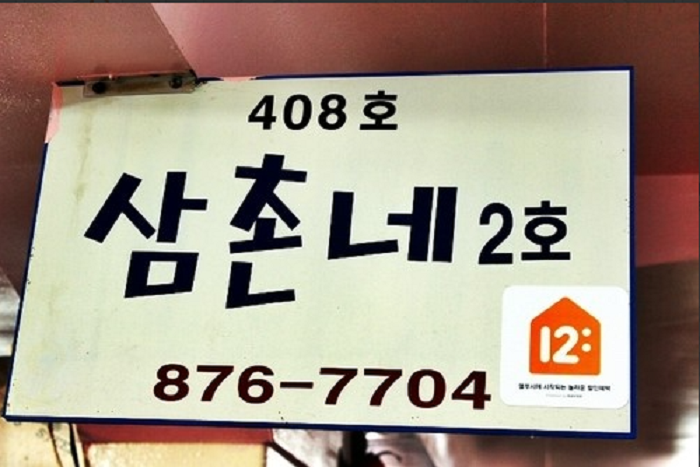


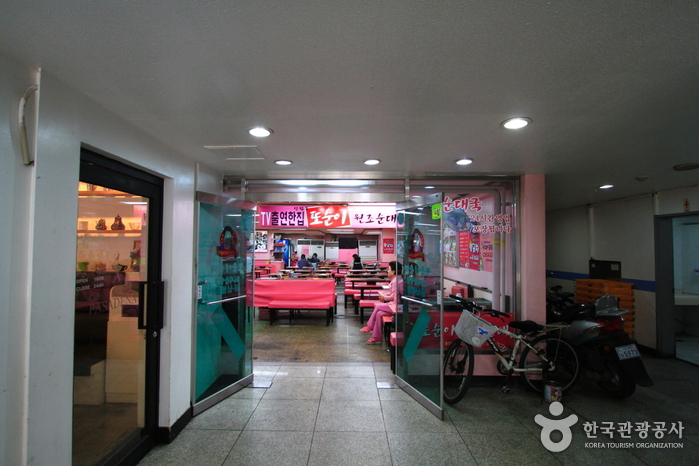
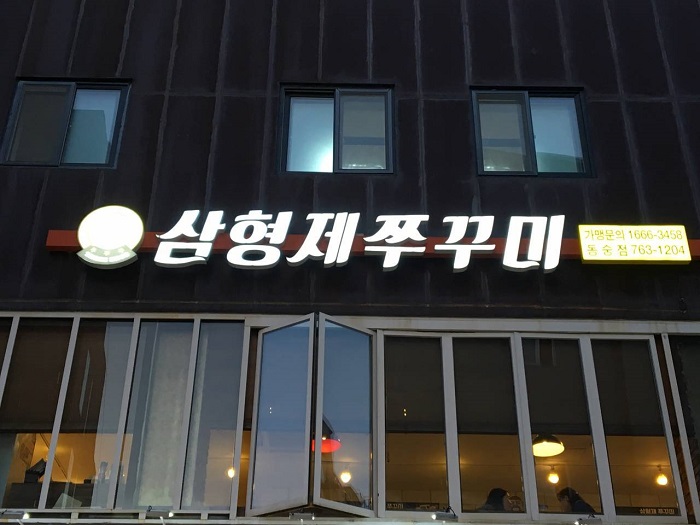
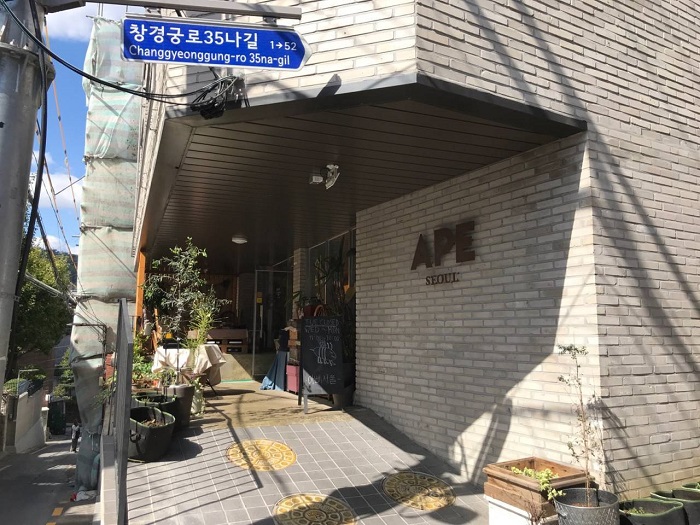

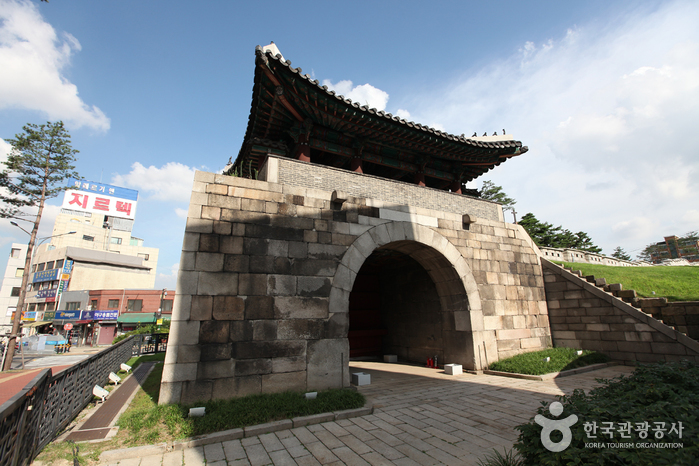
 Español
Español
 한국어
한국어 English
English 日本語
日本語 中文(简体)
中文(简体) Deutsch
Deutsch Français
Français Русский
Русский